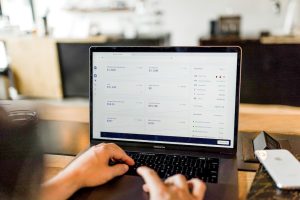Forex trading involves buying or selling one currency against another. The movement of forex pairs is driven by a combination of factors, including economic news, political events, and market sentiment. Understanding the times when forex pairs move can help traders make informed decisions about when to enter or exit a trade. This article will provide an in-depth analysis of the times when forex pairs move.
Forex pairs move throughout the trading day, but they tend to be more active during certain times. The forex market operates 24 hours a day, five days a week, and is divided into four trading sessions: the Asian session, the European session, the North American session, and the Pacific session. Each session has its own unique characteristics, and forex pairs tend to move differently during each session.
The Asian Session
The Asian session is the first trading session of the day and starts at 11:00 pm GMT and ends at 8:00 am GMT. This session is marked by low volatility, which makes it ideal for traders who prefer a calm trading environment. Forex pairs that involve the Japanese yen, such as USD/JPY and EUR/JPY, tend to be more active during the Asian session. This is because Japan is a major player in the forex market, and any news related to the Japanese economy can trigger volatility in the yen.
The European Session
The European trading session starts at 7:00 am GMT and ends at 4:00 pm GMT. This session is the busiest trading session and is characterized by high volatility. The European session is the most important trading session because it overlaps with the Asian and North American sessions. During this session, forex pairs that involve the euro, such as EUR/USD and EUR/GBP, tend to be the most active. This is because the eurozone is a major economic power, and any news related to the eurozone economy can trigger volatility in the euro.
The North American Session
The North American session starts at 12:00 pm GMT and ends at 9:00 pm GMT. This session is characterized by high volatility, especially during the first two hours of the session. During this time, traders in Europe are still active, and there is a lot of overlap between the European and North American sessions. Forex pairs that involve the US dollar, such as USD/JPY and USD/CAD, tend to be the most active during this session. This is because the US economy is the largest economy in the world, and any news related to the US economy can trigger volatility in the US dollar.
The Pacific Session
The Pacific session is the last trading session of the day and starts at 9:00 pm GMT and ends at 6:00 am GMT. This session is marked by low volatility, and forex pairs that involve the Australian dollar, such as AUD/USD and AUD/NZD, tend to be the most active during this session. This is because Australia is a major player in the forex market, and any news related to the Australian economy can trigger volatility in the Australian dollar.
Factors that Affect the Movement of Forex Pairs
Apart from the trading sessions, several factors can affect the movement of forex pairs. These include economic news, political events, and market sentiment. Economic news, such as the release of GDP data, inflation data, and employment data, can trigger volatility in forex pairs. Political events, such as elections and policy changes, can also affect the movement of forex pairs. Market sentiment, which is the overall attitude of traders towards a particular currency, can also affect the movement of forex pairs.
Conclusion
Forex pairs move throughout the trading day, but they tend to be more active during certain times. Understanding the times when forex pairs move can help traders make informed decisions about when to enter or exit a trade. The Asian session is marked by low volatility, while the European and North American sessions are characterized by high volatility. The Pacific session is marked by low volatility, and forex pairs that involve the Australian dollar tend to be the most active during this session. Apart from the trading sessions, several factors can affect the movement of forex pairs, including economic news, political events, and market sentiment.





